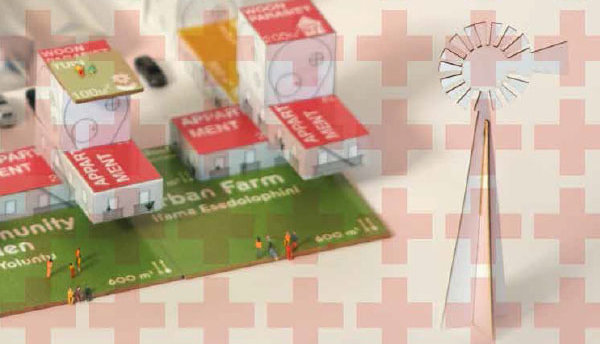The visions of citizens and experts on the future of urban development are often miles apart. Nevertheless, doctoral candidate Ekim Tan believes that they can be reconciled through play. Formal and informal interested parties can find each other in her city game ‘Play the City’, which she designed herself.
Dutch King Willem Alexander initiated a broad debate by bringing up the topic of the 'participatory society' during his first speech as king. If the government becomes less involved, how big should the role of the citizen become? And how does that new role relate to urban development? Ekim Tan's 'Generative City Game' provides a possible answer. In her dissertation Negotiation and Design for the Self-Organizing City, the focus lies entirely on self-organisation. According to her, self-organisation is the new form of participation. The discussion should not be about top-down or bottom-up city plans, but rather about methods for developing cities collectively.
She believes that humans are naturally playful, which is why she invented Play the City. The city game allows experts and laymen to come up with solutions to urban problems in a playful manner. By using visual communication and plain language, they can work together without jargon in Play the City. The combination of professional and personal knowledge results in collective intelligence. Players with conflicting interests can still reach a consensus. This has great advantages: support will increase, and the duration and the costs of planning programmes will be limited.
The development of this method can be followed by means of six games in her dissertation. Each of these games was designed to assist people with city planning, from architects to neighbourhood associations, housing corporations, cultural institutions and municipal governments.
In the last five years, the Generative City Game has been tested in various cities, including Amsterdam, Almere, The Hague, Brussels, Istanbul and Tirana. These tests revealed that the game can be applied to highly diverse and complex urban environments. Play Rotterdam, for example, used design solutions from the game to restructure a working-class area, while in the Turkish version – Yap-Yaşa – interested parties played a part in the transformation of Istanbul's self-constructed districts. In Play Noord, small-scale initiators investigated how they could correct an unsuccessful master plan for Amsterdam.
The PhD candidate's aim is to ensure that Play the City becomes an indispensable part of the urban decision-making process. The Play the City Studio was established for this purpose.
